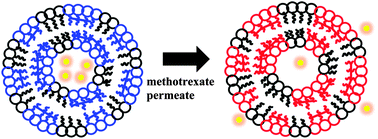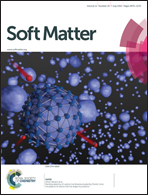Chromatic response of polydiacetylene vesicle induced by the permeation of methotrexate
Abstract
The noble vesicular system of polydiacetylene showed a red shift using two types of detecting systems. One of the systems involves the absorption of target materials from the outer side of the vesicle, and the other system involves the permeation through the vesicular layers from within the vesicle. The chromatic mixed vesicles of N-(2-aminoethyl)pentacosa-10,12-diynamide (AEPCDA) and dimethyldioctadecylammonium chloride (DODAC) were fabricated by sonication, followed by polymerization by UV irradiation. The stability of monomeric vesicles was observed to increase with the polymerization of the vesicles. Methotrexate was used as a target material. The polymerized mixed vesicles having a blue color were exposed to a concentration gradient of methotrexate, and a red shift was observed indicating the adsorption of methotrexate on the polydiacetylene bilayer. In order to check the chromatic change by the permeation of methotrexate, we separated the vesicle portion, which contained methotrexate inside the vesicle, and checked chromatic change during the permeation of methotrexate through the vesicle. The red shift apparently indicates the disturbance in the bilayer induced by the permeation of methotrexate. The maximum contrast of color appeared at the equal molar ratio of AEPCDA and DODAC, indicating that the formation of flexible and deformable vesicular layers is important for red shift. Therefore, it is hypothesized that the system can be applicable for the chromatic detection of the permeation of methotrexate through the polydiacetylene layer.


 Please wait while we load your content...
Please wait while we load your content...